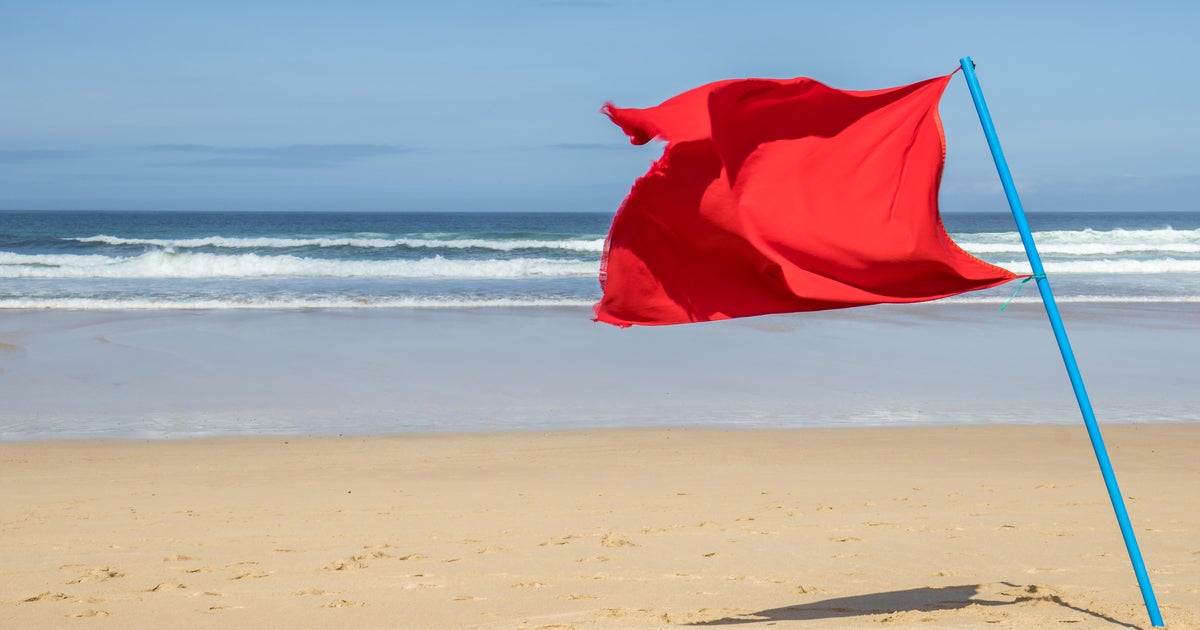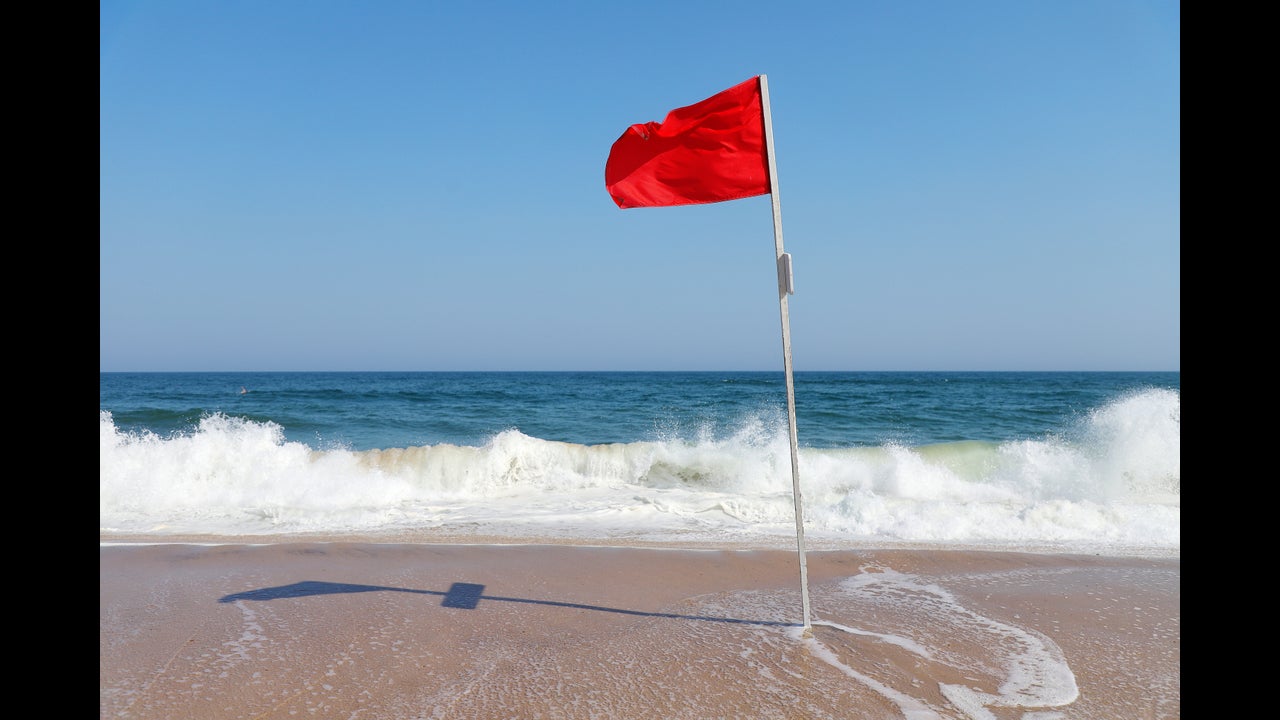A warm day often invites the allure of the beach, but the ocean’s inviting waves can harbor unseen dangers. From rip currents and strong waves to jellyfish and sharks, it’s crucial to be aware of these potential hazards. Beach safety flags provide essential warnings, with colors like purple, yellow, red, and blue indicating specific risks. Understanding these flags is vital for a safe beach visit.

The Importance of Beach Flags
Beach flags are a universal system designed to inform beachgoers of ocean conditions and potential dangers lurking beneath the waves. The U.S. Lifesaving Association (USLA) and the International Life Saving Federation (ILS) have established these flags to enhance safety and ensure visitors are aware of the risks before they enter the water. These flags are used globally, making it easier for people to understand safety warnings regardless of where they are.
Deciphering Beach Flag Colors
- Green Beach Flag: A green flag indicates calm or mild ocean conditions. While not officially adopted by the ILS due to the belief that there is always some risk, some localities use it to signify safe waters.
- Yellow Beach Flag: This flag signals a medium hazard with moderate surf conditions and currents. Weak swimmers should stay out of the water, and others should exercise caution. Rip currents are a particular danger when the yellow flag is flying.
- Red Beach Flag: Red indicates high-hazard conditions, such as strong surf and currents. Swimmers are discouraged from entering the water and should be extremely cautious if they do.
- Double Red Beach Flag: When two red flags are stacked, it means the water is closed to the public due to dangerous conditions.
- Purple Beach Flag: This flag warns of marine pests like jellyfish and stingrays. It is not intended to signal the presence of sharks, although some areas might use it for that purpose.
- Red and Yellow Beach Flag: A single flag that is half red and half yellow indicates a lifeguarded area. It marks a supervised zone where swimming is permitted under watchful eyes.
- Red and White Beach Flag: Quartered red and white flags mean swimmers should evacuate the water immediately due to emergencies like contamination or the presence of dangerous marine creatures.
- Black and White Beach Flag: These quartered flags mark areas designated for surfboards and other non-powered watercraft, indicating that swimmers should avoid these zones.
- Yellow Beach Flag with Central Black Ball: This flag prohibits the use of surfboards and non-powered watercraft in the area.
- Orange Windsock: Windsocks show wind direction and strength, indicating it is unsafe for inflatable objects in the water due to strong winds.

Tips for a Safe Beach Experience
Understanding beach flags is essential for safety, but it’s also important to follow local guidelines and check with lifeguards. Florida, for instance, uses a uniform system with only purple, green, yellow, red, and double red flags. Always verify the specific flag system of the beach you are visiting and be aware of local weather conditions and potential hazards.
Before heading to the beach, educate yourself on the flag meanings, listen to lifeguards, and stay informed about the weather. By doing so, you can ensure a safe and enjoyable day by the ocean.
